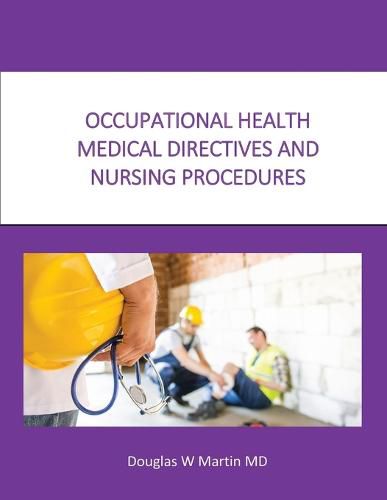Readings Newsletter
Become a Readings Member to make your shopping experience even easier.
Sign in or sign up for free!
You’re not far away from qualifying for FREE standard shipping within Australia
You’ve qualified for FREE standard shipping within Australia
The cart is loading…






This title is printed to order. This book may have been self-published. If so, we cannot guarantee the quality of the content. In the main most books will have gone through the editing process however some may not. We therefore suggest that you be aware of this before ordering this book. If in doubt check either the author or publisher’s details as we are unable to accept any returns unless they are faulty. Please contact us if you have any questions.
These directives are designed to be used by nurses in an occupational health nursing program. These procedures outline the nurses’ role in the handling of emergent and non-emergent situations in the occupational health care setting. As is the case with all occupational health best practices , accurate documentation is of the utmost importance. There is a plethora of different onsite occupational health nursing services. Not every employer will use every available service. It is also important to note that some employers may have unique needs. It is not the purpose of this document to be all-encompassing or to substitute as a compendium of occupational health practice. Therefore, there may be times when an employer will request an occupational health nursing service that is not addressed within this guideline. When that occurs, the request should be submitted to the medical director for review. If appropriate, addenda to these guidelines regarding the specific request will be issued and are to be considered an extension of this document. In every instance, the recommendations contained within these guidelines are based upon evidence-based literature. It should be understood that in some areas, the evidence is weak or does not exist. In these instances, consensus recommendations are provided. It should be understood that health care is both art and science. Since it is ever-evolving, the recommendations contained within these guidelines may become obsolete or incorrect as new information is published. It is for this reason that these guidelines are to be reviewed at least on an annual basis.
$9.00 standard shipping within Australia
FREE standard shipping within Australia for orders over $100.00
Express & International shipping calculated at checkout
This title is printed to order. This book may have been self-published. If so, we cannot guarantee the quality of the content. In the main most books will have gone through the editing process however some may not. We therefore suggest that you be aware of this before ordering this book. If in doubt check either the author or publisher’s details as we are unable to accept any returns unless they are faulty. Please contact us if you have any questions.
These directives are designed to be used by nurses in an occupational health nursing program. These procedures outline the nurses’ role in the handling of emergent and non-emergent situations in the occupational health care setting. As is the case with all occupational health best practices , accurate documentation is of the utmost importance. There is a plethora of different onsite occupational health nursing services. Not every employer will use every available service. It is also important to note that some employers may have unique needs. It is not the purpose of this document to be all-encompassing or to substitute as a compendium of occupational health practice. Therefore, there may be times when an employer will request an occupational health nursing service that is not addressed within this guideline. When that occurs, the request should be submitted to the medical director for review. If appropriate, addenda to these guidelines regarding the specific request will be issued and are to be considered an extension of this document. In every instance, the recommendations contained within these guidelines are based upon evidence-based literature. It should be understood that in some areas, the evidence is weak or does not exist. In these instances, consensus recommendations are provided. It should be understood that health care is both art and science. Since it is ever-evolving, the recommendations contained within these guidelines may become obsolete or incorrect as new information is published. It is for this reason that these guidelines are to be reviewed at least on an annual basis.